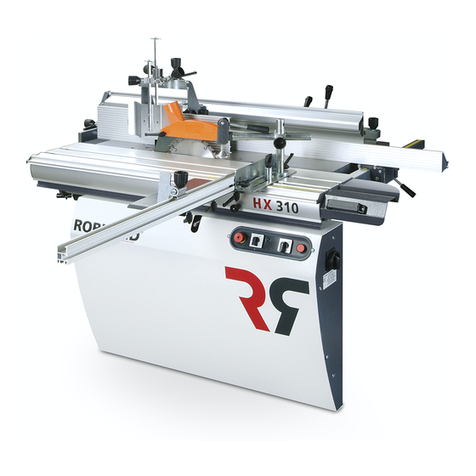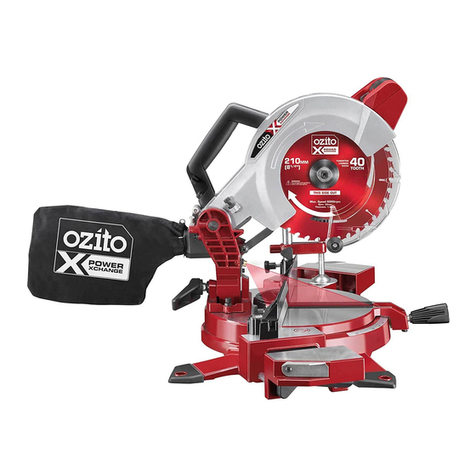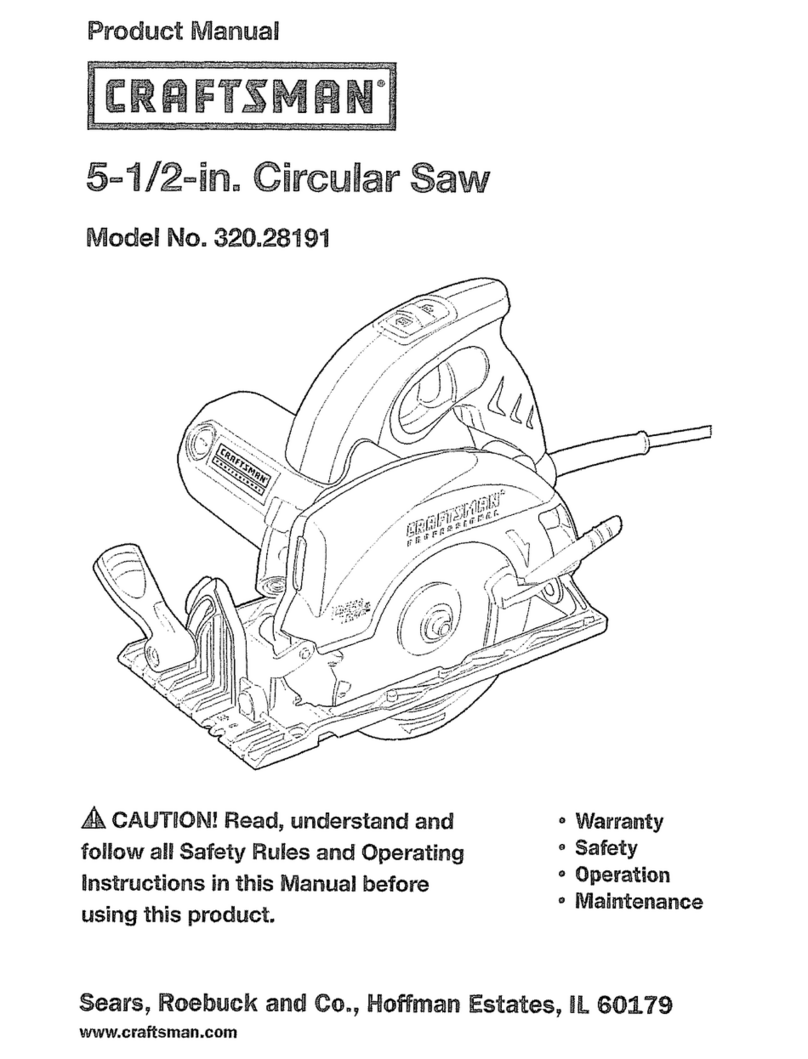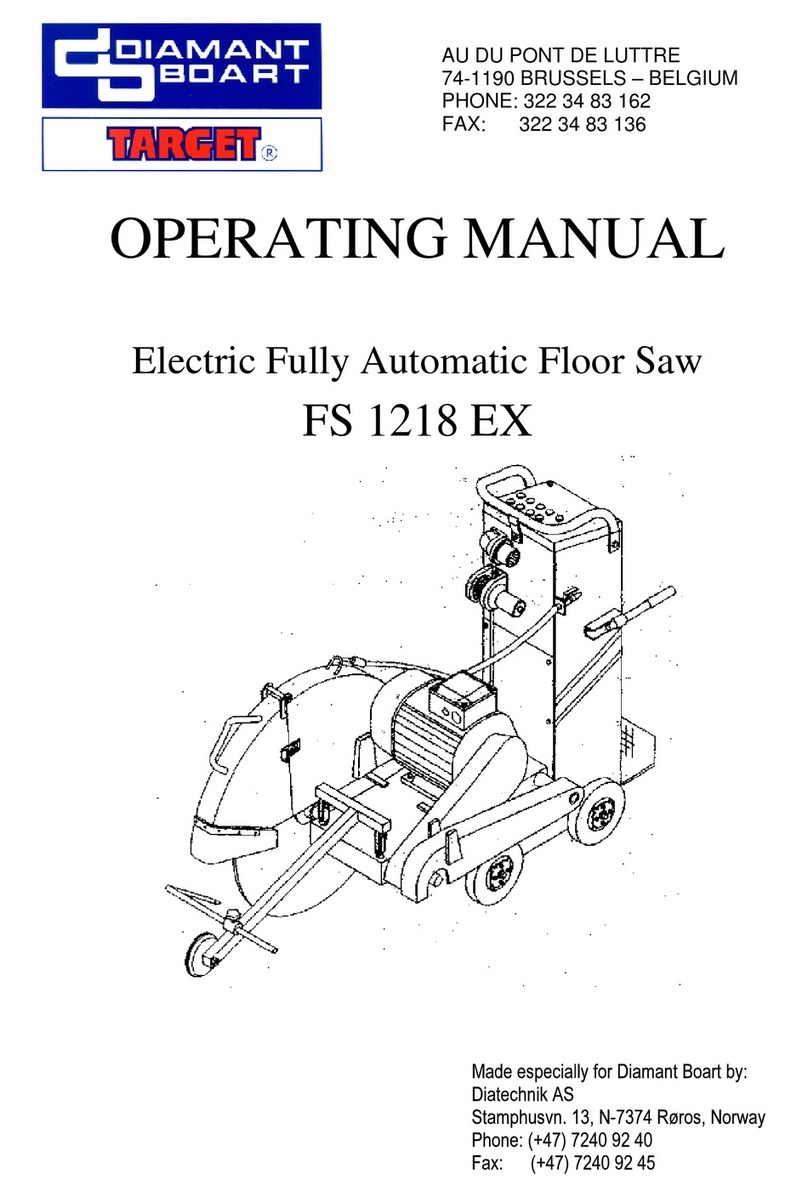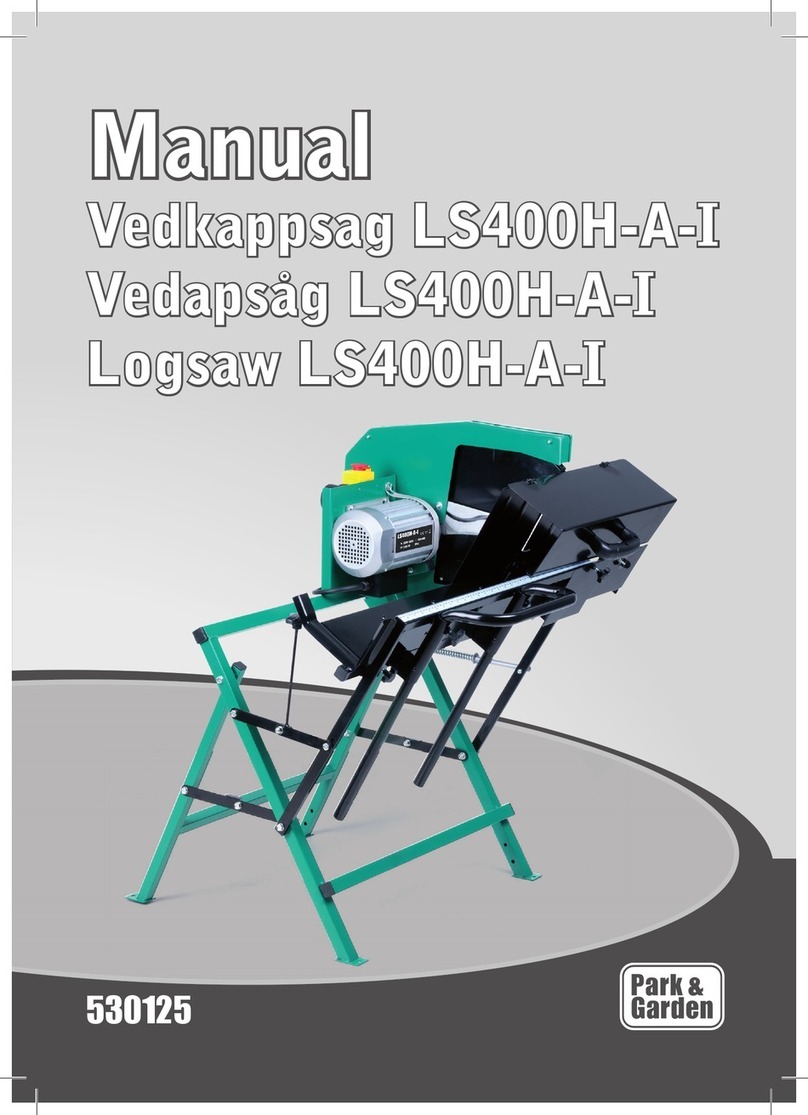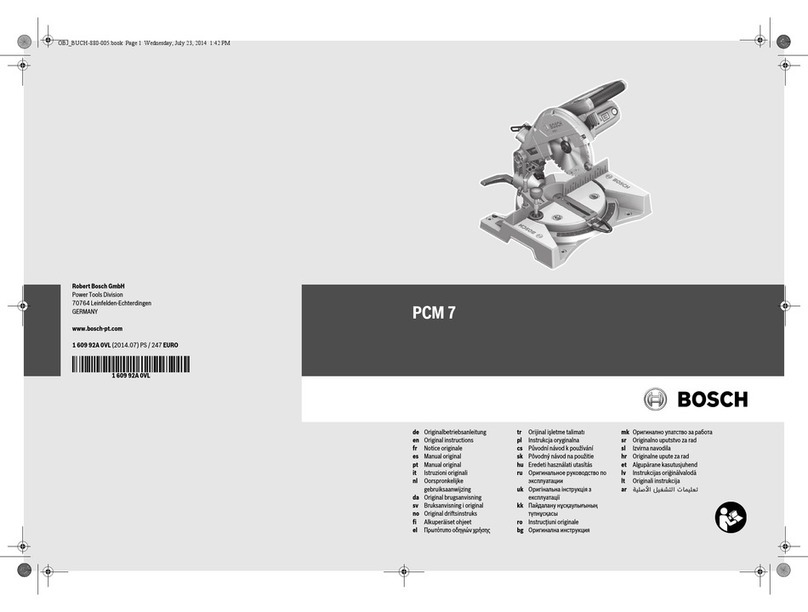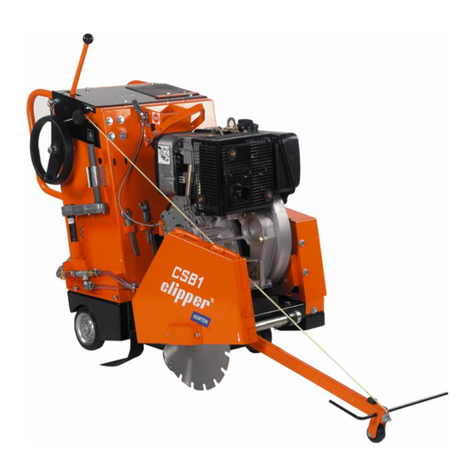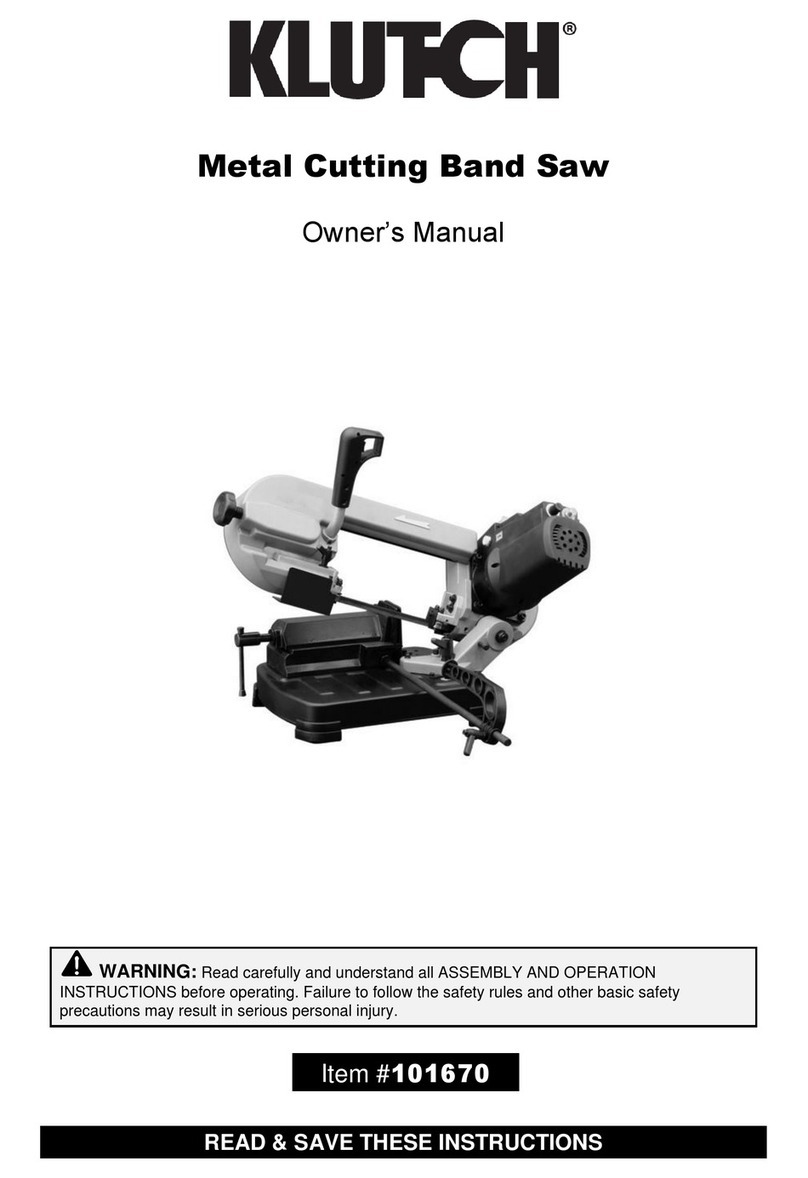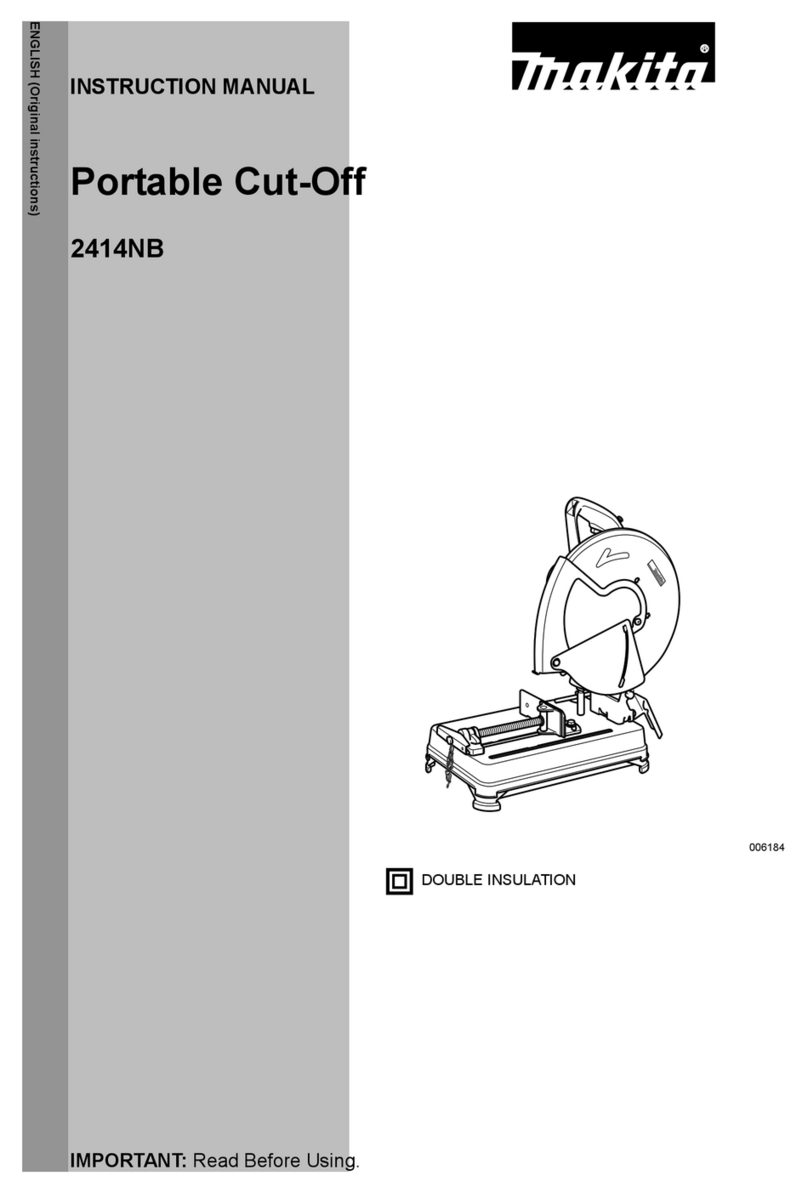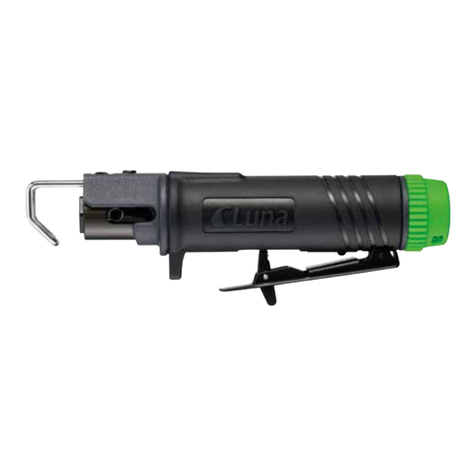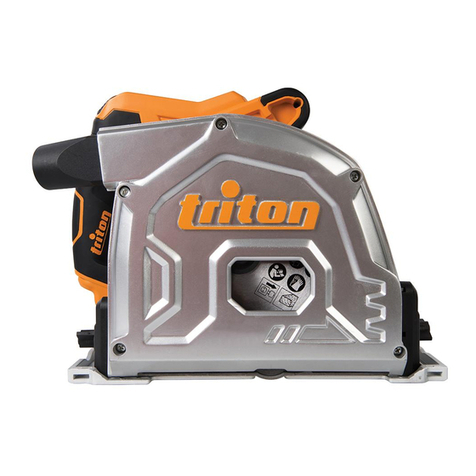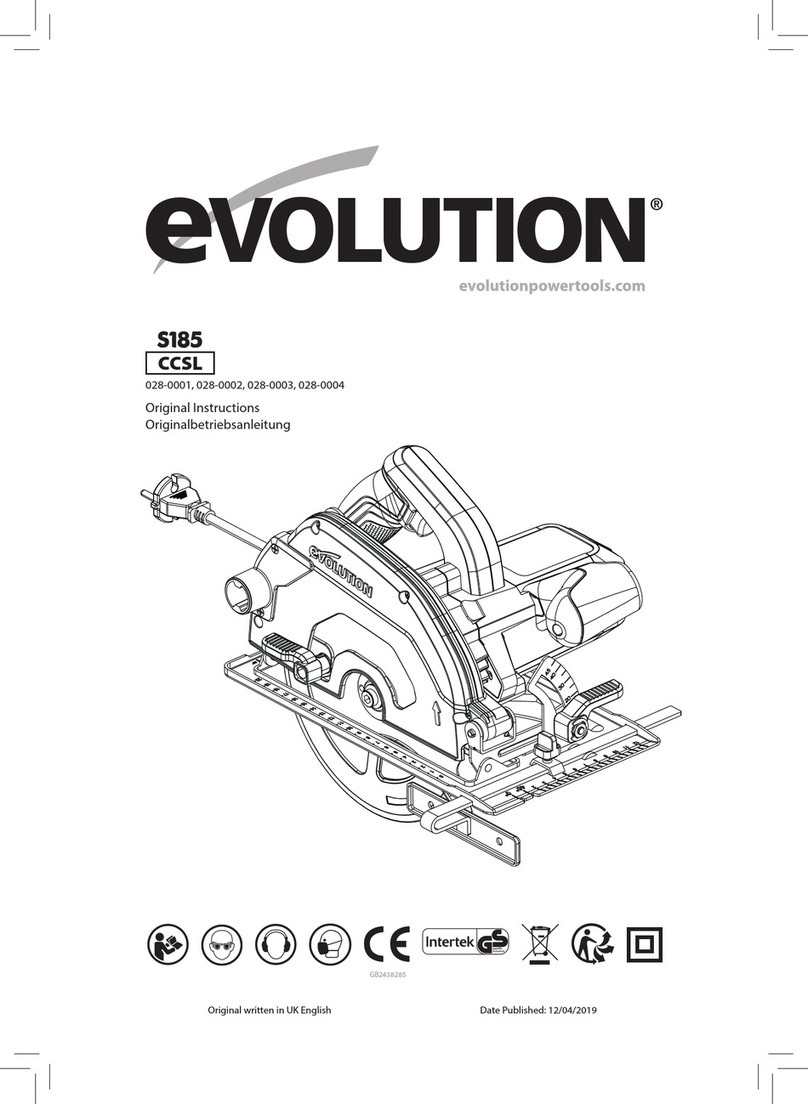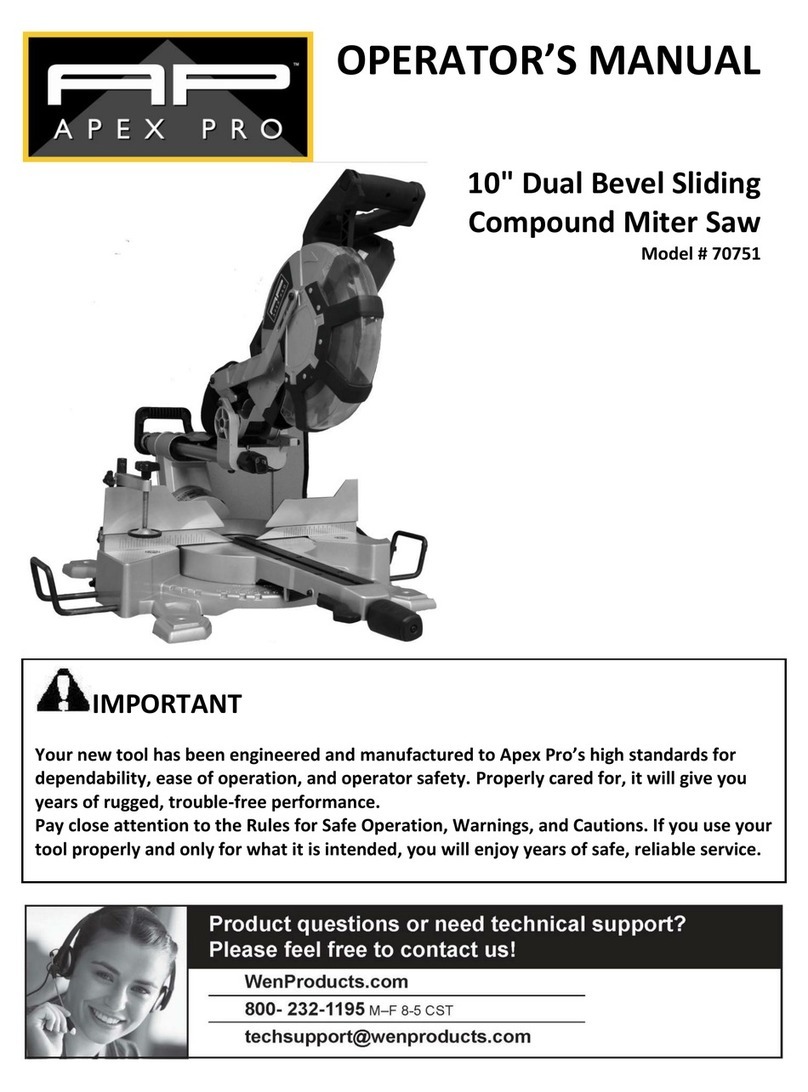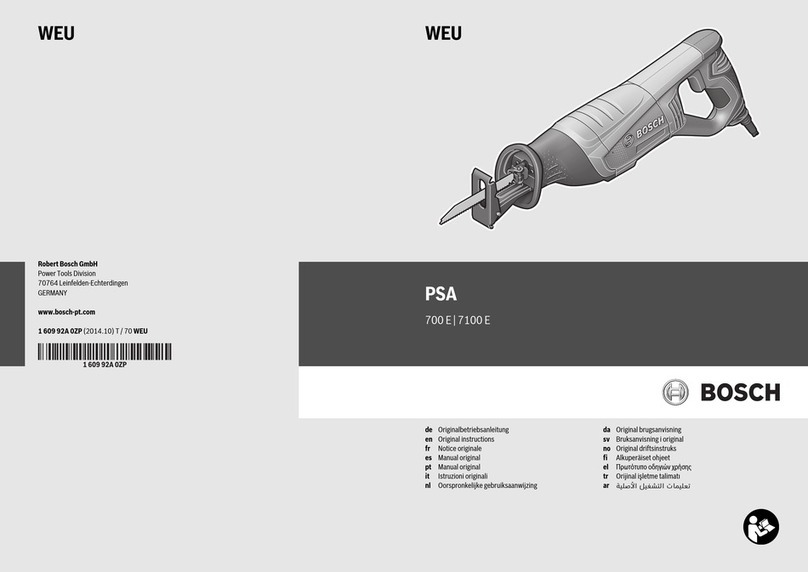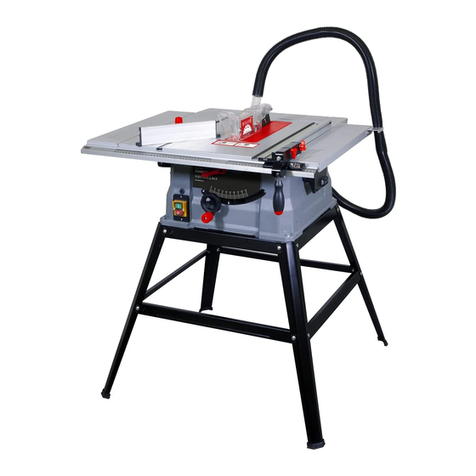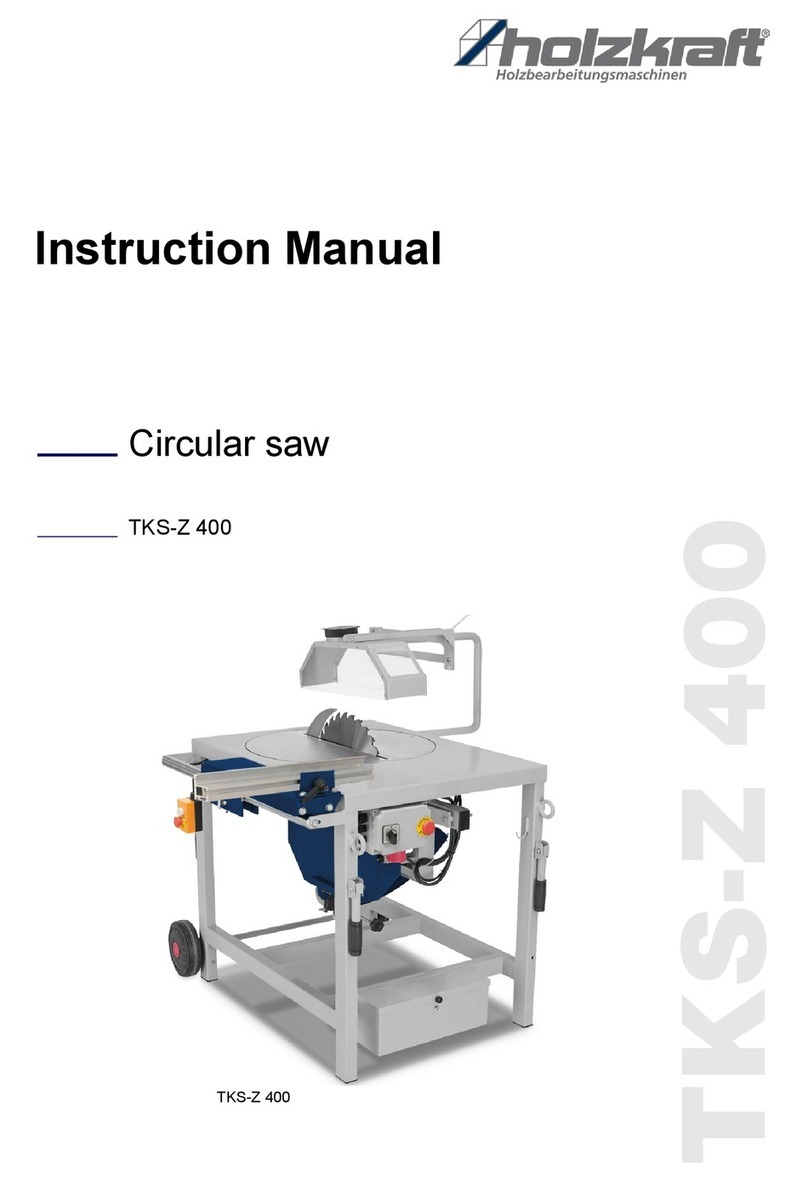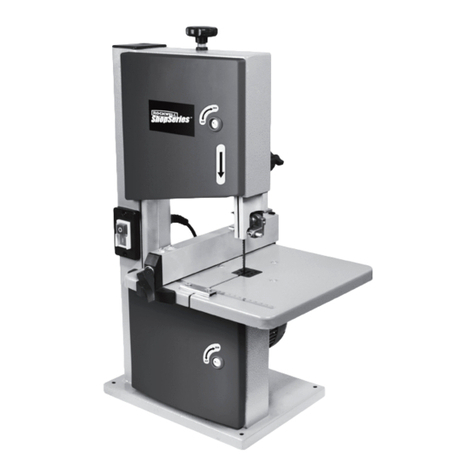Robland E - 45 User manual

1
Contents
- General information . . . . . . . . . . . . . . . . . . . . . . . . . . . . . . . . . . . . . . . . . . . . . . . . . . . 2
- Important instructions when ordering spare parts . . . . . . . . . . . . . . . . . . . . . . . . . . . 2
- Safety and maintenance instructions . . . . . . . . . . . . . . . . . . . . . . . . . . . . . . . . . . . . . . 3
- Danger list . . . . . . . . . . . . . . . . . . . . . . . . . . . . . . . . . . . . . . . . . . . . . . . . . . . . . . . . . . . 3
- Operating instructions . . . . . . . . . . . . . . . . . . . . . . . . . . . . . . . . . . . . . . . . . . . . . . . . . 4
- Normal and prohibited use . . . . . . . . . . . . . . . . . . . . . . . . . . . . . . . . . . . . . . . . . . . . . . 5
- Accoustic and dust emission levels. . . . . . . . . . . . . . . . . . . . . . . . . . . . . . . . . . . . . . . . 5
- Technical data . . . . . . . . . . . . . . . . . . . . . . . . . . . . . . . . . . . . . . . . . . . . . . . . . . . . . . . . 6
- General dimensions . . . . . . . . . . . . . . . . . . . . . . . . . . . . . . . . . . . . . . . . . . . . . . . . . . . 7
- Transportation of the machine . . . . . . . . . . . . . . . . . . . . . . . . . . . . . . . . . . . . . . . . . . . 8
- Electrical connections of the machine . . . . . . . . . . . . . . . . . . . . . . . . . . . . . . . . . . . . . 8
- Starting up the machine . . . . . . . . . . . . . . . . . . . . . . . . . . . . . . . . . . . . . . . . . . . . . . . 10
- Mounting of the sliding table . . . . . . . . . . . . . . . . . . . . . . . . . . . . . . . . . . . . . . . . . . . 10
- Changing saw blades . . . . . . . . . . . . . . . . . . . . . . . . . . . . . . . . . . . . . . . . . . . . . . . . . . 10
- Use and adjustment of the riving knife. . . . . . . . . . . . . . . . . . . . . . . . . . . . . . . . . . . . 12
- Sliding table lock. . . . . . . . . . . . . . . . . . . . . . . . . . . . . . . . . . . . . . . . . . . . . . . . . . . . . 12
- Mounting of the cross cut fence . . . . . . . . . . . . . . . . . . . . . . . . . . . . . . . . . . . . . . . . . 12
- Calibration of the scale on the cross cut fence. . . . . . . . . . . . . . . . . . . . . . . . . . . . . . 14
- Mitre fence . . . . . . . . . . . . . . . . . . . . . . . . . . . . . . . . . . . . . . . . . . . . . . . . . . . . . . . . . . 14
- Use of the parallel fence. . . . . . . . . . . . . . . . . . . . . . . . . . . . . . . . . . . . . . . . . . . . . . . . 14
- Calibration of the scale on the fence. . . . . . . . . . . . . . . . . . . . . . . . . . . . . . . . . . . . . . 16
- Overhead sawguard . . . . . . . . . . . . . . . . . . . . . . . . . . . . . . . . . . . . . . . . . . . . . . . . . . . 16
- Raise and fall and tilting of the sawblade . . . . . . . . . . . . . . . . . . . . . . . . . . . . . . . . . . 16
- Belt tension and changing. . . . . . . . . . . . . . . . . . . . . . . . . . . . . . . . . . . . . . . . . . . . . . 18
- Maintenance of the machine. . . . . . . . . . . . . . . . . . . . . . . . . . . . . . . . . . . . . . . . . . . . 18
- Problems and trouble shooting. . . . . . . . . . . . . . . . . . . . . . . . . . . . . . . . . . . . . . . . . . 18
- Electrical components spares list . . . . . . . . . . . . . . . . . . . . . . . . . . . . . . . . . . . . . . . . 19
- Electrical wiring diagrams . . . . . . . . . . . . . . . . . . . . . . . . . . . . . . . . . . . . . . . . . . . . . 21
- Exploded views . . . . . . . . . . . . . . . . . . . . . . . . . . . . . . . . . . . . . . . . . . . . . . . . . . . 25 —>

2
General information
Name and adress of manufacterer:
NV WERKHUIZEN LANDUYT
Kolvestraat 44
B - 8000 BRUGGE
BELGIUM
The model has been examined by the following organisation:
L’INSTITUT NATIONAL DE RECHERCHE ET DE SECURITE I.N.R.S.
Avenue de Bourgogne - BP27 - F 54501 Vandoeuvre Cedex - France
Description of the machine: TABLE SAW E45
Date of construction of the machine: from 1998 on
Important instructions when ordering
spare parts at your machine dealer
Always mention the following items on your order:
- Type of machine
- Serial number of the manual
- Part number and quantity
- Your reference and correct phone and fax number
Attention
Working with woodworking machines can be extremely dangerous if the safety instructions are
not followed.
It is recommended to systematically use the safety equipment installed on your machine.
Use only EN-847-1 sawblades on your machine.

3
Safety and maintenance instructions
Woodworking is a pleasant job that will give you a lot of satisfaction.
Nevertheless, working with a machine requires constant attention and care. Therefore, for your own
safety, pay attention to the instructions summarised in this chapter.
- The machine can only be used safely if the operator strictly follows the operating and safety
instructions.
- It is absolutely essential to read this manual before using the machine so you know how to
the machine works and what its limitations are.
- Always make sure that all safety devices are fitted to the machine and that the machine is connected
to a dust extraction system.
- Provide sufficient space arround the machine and a good lighting of the workshop.
- When changing tools or when doing a maintenance job, the machine must always be disconnected
from its power supply.
- Knives and tools which are not correctly sharpened, or are in a bad shape, not only diminish
the quality of the work, but also increase the risk of accidents.
- Always wear suitable clothing, loose or torn clothes are very dangerous.
- Keep children away from the machine and out of the workshop.
- To avoid damaging your hearing we recommend to wear ear protection, when working
with the machine.
Danger list
The danger list is based on parts 1 and 2 of EN 290 and annexe A of part 2.

4
Operating instructions
- The following recommendations for safe working procedures are given as an example, on top
of all information characteristics of this machine.
- When working with the machine, safety equipment must be used.
- Nevertheless, the user must also follow the operating instructions to avoid accidents.
1. Training of machine operators
It is absolutely essential that the machine operator receives thourough training regarding ope-
rating
and adjusting the machine.
In particular:
a) The risks involved in working with the machine;
b) The operating principles, the correct usage and adjustment of the machine;
c) The correct choice of the tool for each operation;
d) The safe handling of the parts to be processed;
e) The position of the hands in relation to the sawblade;
f) Storing the workpieces safely before and after machining them;
2. Stability of the machine
In order to be able to use the machine safely, it is essential to place it stable on the ground.
3. Adjustment and installation
a) Disconnect the machine from the power supply before every adjustment.
b) The recommendations of the machine manufacterer must be followed when adjusting
and installing the tools.
c) The tools must be suited to the material being cut to assure safe and efficient sawing.
d) The tools must be correctly sharpened and installed.
4. Handling of tools
In order to avoid severe cuts, safety measurements, such as the wear of safety gloves, must be
taken when handling sawblades, or other tools you are using in your workshop.
Even blunt tools can cause serious injuries to your hands.

5
Normal and prohibited use
The table saw is designed for the following work and is equiped with protective devices for these processes
only. It is not designed to work materials such as ferrous and non-ferrous metals, work different from
that stated below is prohibited.
NORMAL USE
- Ripping with the parallel saw fence with, or without the sawblade tilted and the fence in
the upright or low position;
- Right-angled or mitre cuts with the 90° fence mounted to the sliding table with tilted or
upright sawblade;
- Cross cutting workpieces using the adjustable stop on the 90° fence;
- Cutting panels or solid wood on the sliding table;
PROHIBITED USE
Following tasks are prohibited on the table saw:
- Submerged cuts by removing the riving knife, and saw guard;
- All types of cuts without using the table saw fence, the 90° fence or sliding table;
- Cutting large workpieces that exeed the machine capacity without using aids such as roller
supports or table extensions;
REMAINING RISKS
Main risks on the table saw are:
- Unintentional contact of the hand with the running sawblade;
- Workpiece kickback;
- Tipping over of the workpiece due to insufficient support;
NOISE REDUCTION
The type and condition of the sawblade is important in keeping the nois level as low as possible.
The material and the position of the safety devices are important in reducing the noise level.
Using the correct speed of the sawblade for the type of material will reduce the noise level as well;
The above does not negate the fact that extra safety equipment such as ear protection must be used.
Accoustic and dust emission levels
The values given are the emission levels; these are not necessary the levels at which the operator
can work safely.
Alhough there is a link between the emission values and the exposion level, it cannot be used in a
reliable way to determine if supplementary measures should be taken.
Noise Information
- Measurements as per ISO Norm 7960; Annexe D
Dust emission
The dust emission examination has been carried out by the following approved body:
Prüfinstitut für Holzstaubmessungen
Institut für Werkzeugmaschinen - Universität Stuttgart - Germany
Measurements as per DIN 933 893 ( GS-HO- 05 )
Measurements show that the TRK- value of 2mg/m3 has not been exeeded.
Notification number and date : 08/03/1998 FPH-AZ : 029/98
Workpost under load Level continuous Level accoustic. Max.value accoustic
accoustic pressure power pressure as per.
per index A index C(instantaneous)
dB (A) dB (A) (MW) dB
Saw 91 105 (26.3) < 130

6
Technical data
Voltage V 220-380
Motor power kW 5,5 / option 4-7,5
Max.-min. diameter sawblade mm 350 - 450
Cutting depht max. 450 mm mm 150
Cutting depht max. 45° mm 120
Saw arbor tilt 90° - 45°
Rip capacity right side mm 1270 (upon request 650)
Cutting lenght mm 1250
Diameter saw arbor mm 30
Speed saw arbor T/min 3000
Dimensions sliding table mm 1510 x 510
Dimensions saw table mm 1150 x 965
Dust suction diameter mm 120 - 50
Netto weight kg 650
Bruto weight kg 750

7
General dimensions
Place of the operator
A: cross cutting
B: ripping

8
Transportation of the machine
(fig. 1, 2)
Depending the method of transport or shipping, you will receive the machine in a crate or on
transport blocks.
Remove the sides of the crate and cover and slide the hoisting equipment under the table as
shown in fig, 1.
The machine can be lifted with a small crane, or a forklift, but severe shocks must be avoided.
Place the machine on a concrete base, and level the machine perfectly horizontally in both
directions.
The machine can also be lifted, or transported using the opening in the front side of the frame
as shown in fig, 2.
Electrical connections (fig. 3, 4)
The electrical connections must be carried out by a qualified electrician who is able to calculate
the
exact needed wire section and caliber of fuses.
- Check that the mains voltage of your machine corresponds with the voltage
in your workshop.
- Open the electrical connection box at the back of the machine (fig, 3).
- Connect the three phases to the terminals marked L1, L2, L3 (fig,4).
- If there is a neutral conductor (blue) it is to be connected to the terminal N.
- Connect the earthing (green-yellow) to the terminal marked with the earth symbol PE.
ATTENTION:
- Check first if the spindle runs free and if all protections are mounted before starting
up the machine.
- If the rotation direction of the spindle is not correct, the leads L1, and L2 must be
exchanged.
The rotation direction of the spindle is anticlockwise: left.

9
(Fig.1-2-3-4)
1
3 4

10
Starting up the machine (fig, 5)
Turn the main switch (1) to position “1” in order to put the machine under tension, and ensure
that the Star-Delta switch (2) is set at the “Star” position.
To start up the motor push the start button (3), and after about 6 seconds switch over to the
“Delta” position.
This time delay of 6 seconds is needed to let the motor gain its full speed before switching over
to “Delta”.
When you forget to switch over from Star to “Delta”, the motor will reach its full speed but will
have no power, and can be damaged very easily.
By pushing the stop button (4) the saw motor is automatically stopped, and slowed down by the
automatic brake( only CE version machines ) within 10 seconds.
WARNING:
All fuses can be found inside the electrical cabinet, and each time this cabinet is
opened the machine must be disconnected from the main power supply.
Mounting of the sliding table (fig, 6)
Slide the guide rail onto the two brackets which are mounted at the side of the saw table, and
lock the two bolts (1).
The same two bolts (1) can be used to change the position of the guide rail relative to the saw
table, unlock and slide the guide rail in or out in function of the stroke of the sliding table
wanted.
The sliding table is to be slid onto the guide rail, and after this has be done put the guide rail
stop bracket at the front end of the guide rail, this in order to prevent the cross cut table from
falling off.
Changing sawblades (fig, 7, 7 bis)
WARNING: Before changing sawblades always disconnect the machine from the main
power supply by turning the main switch off.
Use only sawblades accordingly EN 847-1 specifications.
The wear of safety gloves when changing sawblades is highly recommended.
- Remove the table insert (3) and raise the saw arbor to its highest position, and turn the
saw arbor untill the locking pin (1) can be introduced into the bore of the saw table and
the saw arbor pulley.
- The easyest way to turn the saw arbor is to put the saw nut wrench (2) onto the nut and
turn the saw arbor using this wrench- Now unlock the nut: Warning: left hand thread.
- Before fitting the sawblade ensure that both sawblade body and flanges are clean, this
to prevent the sawblade from wobbling.
- Never forget, after the saw arbor nut has been tightened, to remove the locking pin from
the pulley before starting up the motor.
WARNING: All sawblades used on the machine must have two additional safety bores
in the sawblade body, these bores together with the two bolts in the saw flange prevent
the sawblade from coming off, when the sawblade is stopped by the brake motor.
The dimensions of these bores can be seen in fig, 7 bis.
Never remove the two safety bolts which are fixed in the saw arbor flange.

11
(Fig. 5-6-7-7bis)
6
7
7
bis
1
1
3
2

Use and adjustment of the riving knife
(fig, 8)
The machine is equipped with riving knives for the use of sawblades from 250 to 300 mm, and for
350 to 450 mm diameter.
The riving knife has to be adjusted in such a way that over its entire length the gap between sawblade
and riving knife does not exeed min.3 mm and max. 8 mm.
The riving knife can be adjusted in both vertical and horizontal direction.
The height setting has to be adjusted in such a way that the highest point of the riving knife never exeeds
more than 3 mm above the highest placed sawblade tooth.
After height adjustment always lock the central bolt (3). The three little adjustment screws (2) are
used for the exact setting of riving knife in line with the sawblade.
For slotting or grooving the riving knife has to be adjusted in such a way that the upper part of the riving
knife is never set lower than the highest saw tooth in use.
NEVER REMOVE THE RIVING KNIFE, KICKBACKS CAN KILL !!
Sliding table lock (fig, 9)
When loading the workpiece onto the table, and when ripping along the parallel fence the sliding
table should be locked in place.
To achieve this, simply push the sliding table to the far end against the stop, and lift lever (2) and
push it into the opening at the side of the table.
Mounting of the cross-cut fence
(fig, 10, 10 bis)
- The cross-cut table has four precision bores allowing the fence to be put in 2 positions: at the
back side and at the front side of the cross-cut table.
- Put the fence onto the the cross-cut table and lock it in position using the two serrated nuts (3).
- The 90° right angle of the fence is factory set. Should the 90° angle need to be adjusted, then the
two bolts (fig, 10 bis,2) must be loosened: then by turning the little bolt (fig, 10 bis,1), the angle
can be opened or closed towards the sawblade.
- After adjustment the 2 bolts (fig, 10 bis,2) have to be retightened.

13
(fig. 8-9-10-10bis)
8
10
bis
1
32
32
1

14
Calibration of the scale on the
cross-cut fence (fig, 11, 11 bis)
Each time a new sawblade is used on the machine, the scales have to be calibrated.
Put the first repetition stop (fig, 11,1) at a certain measure and cut off a sample.
Measure the exact length of the sample, unlock the srew (fig, 11,2) which holds the scale and
move the scale untill the exact length of the sample corresponds with the index on the repeti-
tion stop. Now the scale on the telescopic extension of the fence (fig, 11 bis,2) has to be adjusted
to the first scale. When using the telescopic extension, the second repetition stop has to be set
at 1925 mm to make the different scales correspond with one another. The best way to check if
all scales correspond is to make several test cuts on the different scales.
When, after some time, the wooden protection on the cross-cut fence is cut away, a new one can
be made according diagram fig, 12.
Mitre fence (fig, 13)
Mitre cuts can be made using the mitre fence.
This fence can be orientated from -60° to +60°. The use of the fence should be restricted to
short pices of wood not exeeding one metre of length.
Use of the parallel fence
(fig, 14, 14 bis)
When the serrated knob (fig, 14,3) is unlocked, and the handle (fig, 14,1) is lifted up, the com-
plete parallel fence can be moved.
To lock the fence, push handle (1) down.
Micrometric adjustment can be achieved by locking the serrated knob (3) and holding the
handle (1) in the upright position, and then turning the serrated knob (2).
After the micrometric adjustment is carried out, push the handle (1) down to lock the fence in
place.
When cutting small workpieces, and with the saw inclined at 45°, the fence should be set in the
low position.
Simply unlock the clamping handle (4) on top of the casting and slide off the fence, and set the
fence back in the low position as shown in fig 14 bis.
When cutting solid wood against the parallel fence, to avoid the wood getting jammed between
the sawblade or riving knife and fence (resulting in a highly violent dangerous kickback of the
wood) it is recommended to set the fence so that its end never protrudes beyond an imaginary
line drawn at 45° from the centre of the sawblade to the right upper side.
In practice each time a different width of cut is taken, the fence has to be set against this imagi-
nary line at 45°.

15
(fig. 11 - 11bis -12 - 13 - 14 - 14bis)
11
11
bis
12 13
14
12
5
4
3
6712
3
2
14

16
Calibration of the scale on the fence
(fig, 15)
Each time a new sawblade of different thickness is fitted onto the machine, a new calibration of
the scale on the fence is needed.
By cutting a sample and measuring its exact length, the scale can be adjusted so that the exact
measure corresponds with the front side of the fence.
After the screw(6) has been loosened the scale can be adjusted.
To avoid the fence contacting the sawblade while it is revolving, the stop ring (7) has to be
adjusted.
Slide the fence to about 10 mm of the sawblade and now set the stop ring against the cast body
of the fence, and tighten the srew on the stop ring.
Overhead sawguard (fig, 16, 16 bis)
For safety and health reasons it is highly recommended to connect the machine, and sawguard
to a dust extraction system.
Both outlets on the machine (diameter 150 mm) and on the sawguard (diameter 50 mm) need
to be connected, and the dust extractor should be powerfull enough to obtain an airflow of at
least 20m/sec
measured at the outlet of the dust extractor.
Height setting of the guard is achieved with the handle (1).
Relative to the sawblade diameter in use, the guard has to be limited in height using the diame-
ter indicator (2).
To adjust the guard to the diameter push the guard down to the table, and then set the indica-
tor (2) at the chosen diameter of the sawblade.
The narrow sawguard is for cuts at 90°, and the sawfence in the upright position.
All other cuts are made with the wide extension; To remove the extension or side plate cover,
unlock the handle and remove.
Keep the plexiglass window clean to ensure good visibility, and optimal safety.
When damaged, replace this part as soon as possible.
Raise and fall and tilting of the
sawblade (fig,17)
Sawblade height setting is done by turning the handwheel (1).
After the desired cutting depth is set, the handwheel has to be locked with the locking handle (2).
By turning the handwheel (3), the sawunit can be set at any angle between 90° and 45°.
After setting the angle, lock the handwheel using the handle (4), read out of the angle at (5).
Both 90° and 45° stops are factory set and need no adjustment.

17
(Fig. 15 -16 - 16bis - 17 - 18)
15
5
4
3
6712

18
Belt tension and changing (fig, 18)
WARNING:
Always disconnect the machine from its power supply before starting any main-
tenance work.
Turn the main switch on “off” and lock if necessary with a padlock.
After removing the side panel on the machine the belts can be tensionned simply by unlocking
the bolt (1), and pushing the motor down, and then locking again the bolt (1).
Use only original belts Type SPZ 850.
Make sure the belts are not overtensionned, because this will lead to damage of the bearings on
the saw arbor, and belts.
To check the tension of the belts, push in the midlle between the two pulleys with an average
pressure of 3 kgs. If the belt bends 5 to 6 mm, it has the right tension. This can be checked
manually, and on a regular basis.
Maintenance of the machine
The interior and exterior of the machine have to be cleaned regulary to avoid any accumulation
of dust and woodchips.
Any deposition of resin on the sliding table and other surfaces has to be removed.
Never smoke while cleaning the machine, and especially when using petrol or kerosine, or
other inflammable products. This to avoid explosion, and serious burns as a result to the opera-
tor.
All moving parts have to be kept clean and have to be lubricated with a thin penetrating oil.
All bearings are double sealed and need no lubrication. The use of a dust extraction system will
most certainly extend the life of your machine.
The lifetime of the motor can be extended by blowing out sawdust and chippings from the cool-
ing fan and motor itself.
Problems and troubleshooting
1. The machine does not start when the start button is activated :
- workshop main fuse is switched off: power cut, power shortage, or general overload.
- “Star-Delta” switch in the wrong position: put switch on “Star”.
- main switch off: put switch on “1”.
2. Reduction of cutting speed when working :
- belt tension not correct: tension the belt
- motor overload due to incorrect feed rate: reduce the feed rate
- blunt tools: sharpen tools
3. Vibration of the sawblade or arbor :
- unbalanced tool: replace or have the tool balanced
- worn or damaged belt: replace the belt
- overtensionned belt: loosen belt
4. Thermal overload does not re-arm automatically after shut-off and cooling
down period :
- overload is not set on automatic reset, or the overload is faulty: set on automatic, or replace
If you cannot solve the problem yourself or you do not find your problem in this list, please
contact your Robland dealer.

19
Electrical components spares list
”Manual Star-Delta”
Robland spare N°
Q1 Mainswitch N8443
F Fuse holder N8553
F1-2-3 Fuse 10x38mm 4-5,5kW 380V = 16A N8537
4kW 220V 3ph= 16A N8537
7,5kW 380V= 25A N8542
5,5kW 220V 3ph = 25A N8542
7,5kW 220V 3ph = 40A N8594
F4-5 Fuse 10x38mm transfo primaire 1A N8454
F6 transfo secondaire 2A N8553
T1 Transformator 220-380V-24V 30VA N8470
cb1 Thermal overload relay 380V 4kW 7-11A N8491
380V 5,5kW 9-13A N8476
380V 7,5kW 12-18A N8477
220V 4kW 12-18A N8477
220V 5,5kW 17-34A N8487
220V 7,5kW 24-34A N8435
CE 24V Normal
KM1 Magnetic starter 380V 4kW SK11 N8457 N8467
380V 5,5kW SK11 N8457 N8467
380V 7,5kW SK21 N8461 N8580
220V 4kW SK21 N8461 N8465
220V 5,5kW SK21 N8461 N8465
220V 7,5kW SK25 N8566 -
S1 Emergency stop N8498 N8498
S2 Start button N8500 N8500
S3 Start - Delta switch N8447 N8447
Brake motor Normal
M1 Saw motor 380/660V 4kW M353 M352
380/660V 5,5kW M358 M356
380/660V 7,5kW M386 M393
220/380V 4kW M351 M350
220/380V 5,5kW M359 M354
220/380V 7,5kW M384 M394

20
Electrical components spares list
”Automatic Star-Delta”
Robland spare N°
Q1 Main switch N8443
FFuse holder N8553
F1-2-3 Fuse 10x38mm 4-5,5kW 380V = 16A N8537
4kW 220V = 16A N8537
7,5kW 380V = 25A N8542
5,5kW 220V = 25A N8542
7,5kW 220V = 40A N8594
F4-5 Fuse 10x38mm transfo primary = 1A N8454
F6 transfo secondary = 2A N8553
T1 Transformator 220-380V-24V 63VA N8563
cb1 Thermal overload relay 380V 4kW 4-6A N8474
380V 5,5kW 5-8A N8475
380V 7,5kW 7-11A N8491
220V 4kW 7-11A N8491
220V 5,5kW 9-13A N8476
220V 7,5kW 12-18A N8477
CE 24V Normal
KM1 Magnetic starter 380V 4kW SK-R11CX 3x N8457 3x N8467
KM2 Magnetic starter 380V 5,5kW SK-R11CX 3x N8457 3x N8467
KM3 Magnetic starter 380V 7,5kW SK21 3x N8461 3x N8580
220V 4kW SK21 3x N8461 3x N8465
220V 5,5kW SK21 3x N8461 3x N8465
220V 7,5kW SK25 3x N8566 -
TE1 Starter delay SK-R11CX N8556 N8556
SK21 N8559 N8559
S1 Emergency stop N8498 N8498
S2 Start button N8500 N8500
Brake motor Normal
M1 Saw motor 380/660V 4kW M353 M352
380/660V 5,5kW M358 M356
380/660V 7,5kW M386 M393
220/380V 4kW M351 M350
220/380V 5,5kW M359 M354
220/380V 7,5kW M384 M394
Table of contents
Other Robland Saw manuals
